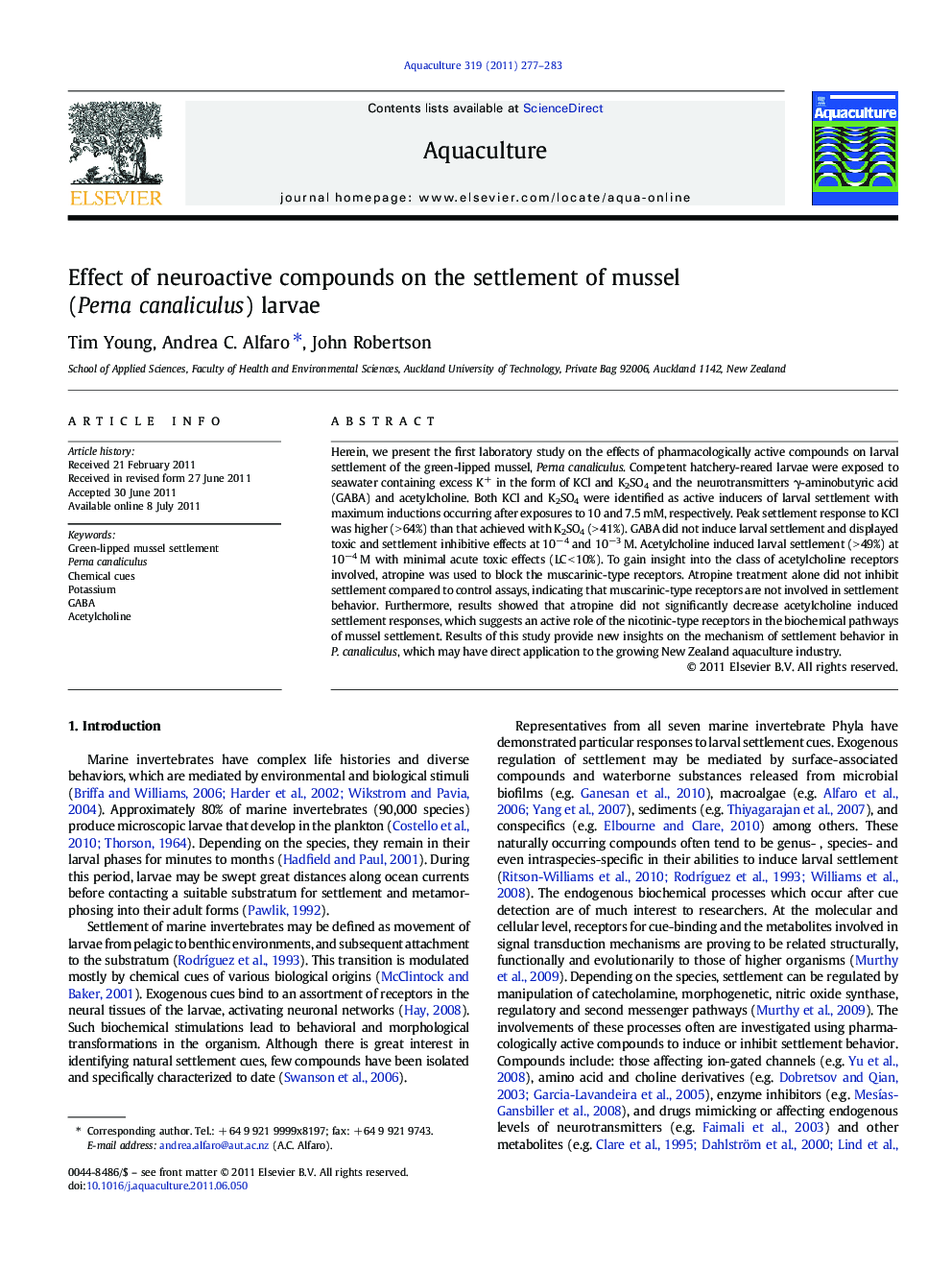| کد مقاله | کد نشریه | سال انتشار | مقاله انگلیسی | نسخه تمام متن |
|---|---|---|---|---|
| 2423056 | 1552904 | 2011 | 7 صفحه PDF | دانلود رایگان |

Herein, we present the first laboratory study on the effects of pharmacologically active compounds on larval settlement of the green-lipped mussel, Perna canaliculus. Competent hatchery-reared larvae were exposed to seawater containing excess K+ in the form of KCl and K2SO4 and the neurotransmitters γ-aminobutyric acid (GABA) and acetylcholine. Both KCl and K2SO4 were identified as active inducers of larval settlement with maximum inductions occurring after exposures to 10 and 7.5 mM, respectively. Peak settlement response to KCl was higher (> 64%) than that achieved with K2SO4 (> 41%). GABA did not induce larval settlement and displayed toxic and settlement inhibitive effects at 10−4 and 10−3 M. Acetylcholine induced larval settlement (> 49%) at 10−4 M with minimal acute toxic effects (LC < 10%). To gain insight into the class of acetylcholine receptors involved, atropine was used to block the muscarinic-type receptors. Atropine treatment alone did not inhibit settlement compared to control assays, indicating that muscarinic-type receptors are not involved in settlement behavior. Furthermore, results showed that atropine did not significantly decrease acetylcholine induced settlement responses, which suggests an active role of the nicotinic-type receptors in the biochemical pathways of mussel settlement. Results of this study provide new insights on the mechanism of settlement behavior in P. canaliculus, which may have direct application to the growing New Zealand aquaculture industry.
Journal: Aquaculture - Volume 319, Issues 1–2, 1 September 2011, Pages 277–283